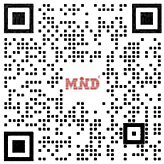Chengdu Mind IOT Technology Co., Ltd. has introduced an automated solution that can help hospital employees fill the consumable medical kits
used in the operating room to ensure that every operation has the right medical tools. Whether it is items prepared for each operation or items that are
not used during the operation and need to be returned and placed on the supply shelf, this system can identify the RFID tags or barcodes on these items.
Mind applications and software will provide a description of the options for each item to ensure that the correct medical tool is selected. In traditional
hospitals, the responsibility for selecting equipment for each operation generally falls on the senior nurses and clinicians, who must go to the supply room
to collect the equipment before each operation. Doctors know what they need and will choose more items to ensure that all equipment that may be needed
during the operation is readily available. Return the unused items to the supply room after the operation. However, such a manual process not only consumes
the time of nurses and doctors, but also causes a large amount of equipment to enter and exit the operating room, causing waste or loss of
equipment inadvertently.
For nurses and clinicians, the focus is to ensure that all the equipment needed for each operation is available. And this set of solutions aims to make the process
of equipment selection and return transparent and easy to implement. The technical director of Mede said, “We have completely changed this process by
establishing a system to guide medical staff to collect the equipment needed for each patient’s surgery.” The hospital uses software and applications to manage
the collected data and each item. You can choose to use UHF RFID tags, barcodes or a combination of both.
Each newly received medical device or tool is marked with a unique ID number, which is coded or printed on a label, and then linked to the corresponding item in the
software. The software also stores the shelf data that each product should be stored in. When staff use RFID handheld readers or barcode scanners to complete daily
picking, the RFiD Discovery application running on the reader will display the scheduled surgical procedures and list the items they need and the shelves where they are
stored. The user can then take the reusable surgical kit to collect the necessary items and scan or query each tag at the same time.
The app will update the list after each scan, and the reader will warn if people pick up the wrong item. After all the items are packaged, the application will finalize the
tool list, and the user can add or remove some items through the exception report, and write remarks if necessary. Next, they will read the RFID tag on the surgical kit
and associate it with all the tagged items in the package. At this time, the system will print a label to associate the patient’s name with the tools placed in the surgical kit.
Then, the surgical bag is directly transferred to the designated operating room, and the RFID reader in the operating room can read the package ID and confirm the
received surgical tool. After the operation is completed, any unused items can be put back in the same package and returned to the supply room together. When
returning, the staff will scan or read each tag, and the collected data can be stored to record which supplies, tools or implants the patient used.
CONTACT
E-Mail: ll@mind.com.cn
Skype: vivianluotoday
Tel/whatspp:+86 182 2803 4833
Post time: Nov-09-2021







